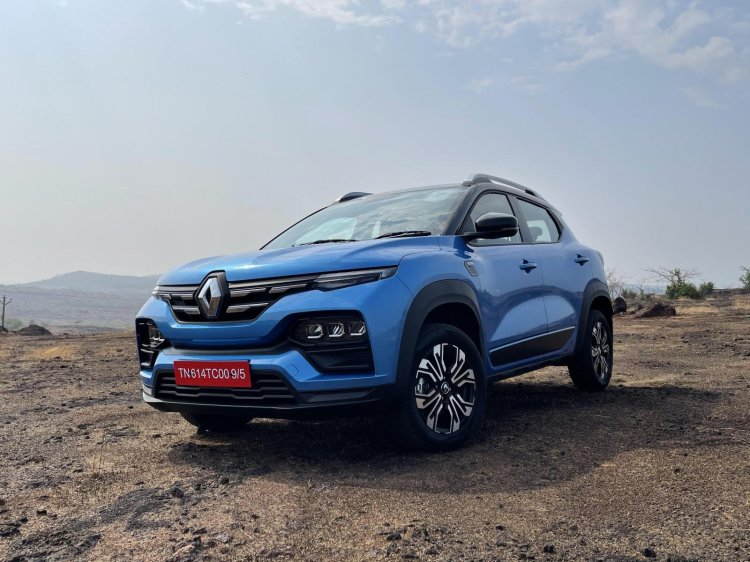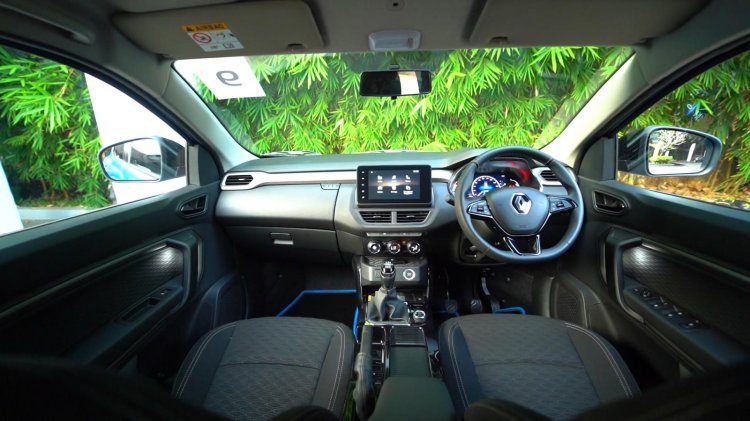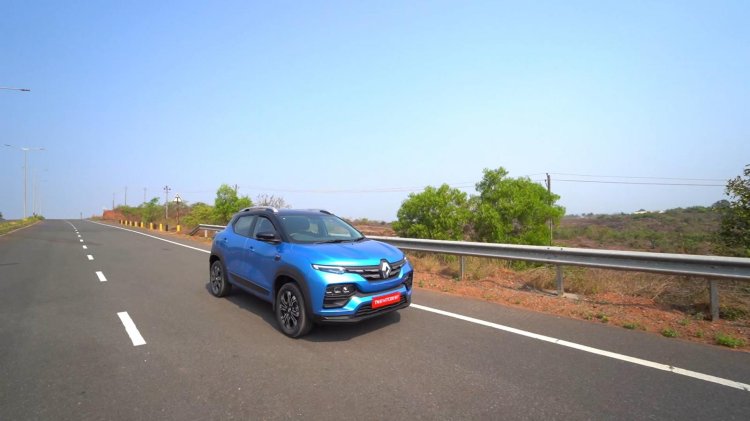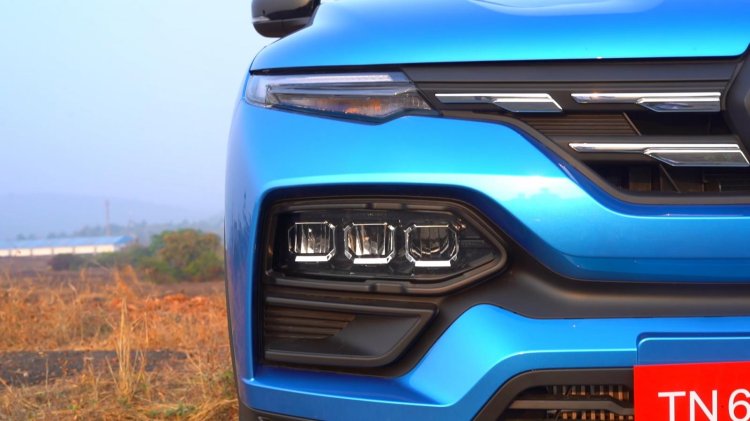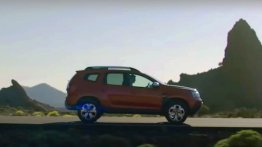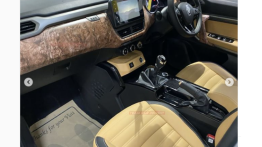Prologue
The sub-compact SUV segment of the Indian auto space has quickly grown to become one of the most crowded sections of the market. The sub-4-metre SUV trend was started by the Ford EcoSport back in 2013, which, then, went on to hit a home run by luring many B2-segment hatchback and C1-segment sedan buyers alike. Come 2016 and Maruti Suzuki introduced the Vitara Brezza - a B-SUV offering that ruled the sales charts for many years to come. By the end of the last decade, most other mainstream carmakers hopped on the bandwagon and tasted success to a varying degree. Earlier this year, barely months after its alliance partner stepped into the bustling sub-compact-SUV market, Renault India came up with its own version in the form of the Kiger. Our Renault Kiger Test Drive Review here should sum up all there's to know about the new kid on the block.
Also Read: Renault Kiger Deliveries to Commence From March 3
Exterior
The Renault Kiger shares its platform, even its engines, with the Nissan Magnite but the similarities don't extend to the aesthetics. Visually, it looks entirely unlike its sibling, which isn't a bad thing if you consider that Kiger's design is in line with many well-established products in the company's lineup. The front-end, for instance, features sleek LED DRLs and multi-port lighting arrangements that would remind you of the updated Kwid. The bumper, however, looks far sportier and lends a very dynamic touch to the front facade, thereby making it more appealing than the Datsun-ish fascia of the Magnite. Another highlight of the front is the well-sculpted bonnet, which works well to make things even more interesting.
The side profile is, again, reminiscent of the Kwid, especially around the C-pillar. However, all the plastic cladding, together with the bold 16-inch dual-tone alloy wheels and the roof rails, validates the small SUV credentials. Meanwhile, thanks to the rather curvaceous boot and the Captur-inspired C-shaped LED taillights, the rear-end turns out to be my favourite bit. Overall, it'll be correct to say that the Kiger is among the most funky-looking options in its segment and exudes a lot more flair than the likes of Maruti Vitara Brezza, Mahindra XUV300 and its own sibling, the Nissan Magnite.
Read More: Check Out Renault Kiger Accessory Packs in Detail
Interior
One of the biggest challenges with sub-4-metre vehicles is the packaging constraints that designers face. However, we were mighty surprised by the space and practicality that the Triber offers, and hence, we almost always had pretty high expectations from the Kiger's interior. A common issue with most sub-compact SUVs is the lack of adequate legroom for rear occupants, a challenge that some manufacturers have overcome by trimming down the boot space. With the Kiger, however, Renault has not just managed to free up enough real estate for the rear occupants but has also provided a segment-leading boot-space of 405-litre. In fact, the cabin scores enough on the practicality front, with many cubby holes and storage spaces strewn around the cabin. The dashboard, for instance, offers two glove compartment, à la Triber. In fact, the dashboard itself looks close to what you get on the sub-compact MPV and lacks the Lamborghini-inspired look found on the Magnite's unit. Thankfully, the plastic quality you get is a tad better than what the sibling offers but still falls short of the Hyundai Venue- and Kia Sonet-level.
However, you do get an all-digital instrument cluster that looks a touch more sophisticated than what you find on the Nissan-badged sibling. The fonts and the readouts are pretty legitimate and you're even greeted with colour themes in accordance with the driving mode you're in. The steering is good to hold, too, while the ergonomics are spot on. The seats are soft and hold you well and should keep you in reasonable comfort over long drives. Features highlights of the cabin include a wireless smartphone charger, 8-inch touchscreen infotainment with wireless Android Auto/Apple CarPlay, 7.0-inch TFT instrument cluster, 8-speaker Arkamys audio system, rear AC vents and 4-airbags (vs 2 on Nissan Magnite). That said, it does miss out on bits like tinted glass, vehicle dynamic control, traction control, TPMS and 360-degree parking camera that the Magnite offers. Also, in Kiger, only the driver gets a seatbelt with a pre-tensioner and load limiter while the same is available for both the front occupants of the Magnite.
Also Read: Here's What's on Offer on Each Trim of Renault Kiger
Performance
Akin to Nissan Magnite, the Renault Kiger is available with two 1.0-litre three-pot petrol mills - a vanilla 71 bhp naturally-aspirated unit and a gruntier 99 bhp turbocharged version. The latter is available with two transmission choices - 5-speed MT and CVT. We drove the former and were quite impressed with the performance on tap. The engine feels peppy, except for a pronounced turbo-lag below 1,800 RPM. Once past, say, 2,000 RPM, the motor comes into its elements and rewards you with a strong surge of performance. Dialling the Kiger into Sport mode makes the throttle sharper and the performance even stronger. However, the engine gets quite vocal, particularly at higher revs. Also, it's certainly not the most refined unit around and a tighter grip on the NVH would have made the entire driving experience a tad more upmarket.
The Renault Kiger even strikes a decent balance in the ride and handling equation. A great ride has always been Renault's forte and the Kiger enjoys this family trait. The new model pretty much glides over small undulations and while the bigger irregularities do tend to unsettle the car a fair bit, the passengers won't complain as much as they would inside a Kia Sonet. Even the handling is fairly decent unless you're looking for a great cornering tool. There's enough body roll under quick lane changes but that's something we expect from a tall family car retailing at this price point. A highlight here, however, is that the steering gets heavier in Sport mode, which helps you gain confidence on the ghats. On the contrary, the steering wheel becomes quite light in Eco mode and helps you easily make your way through congested city streets. Finally, the brakes feel adequate. They aren't the sharpest anchors on offer but certainly feel adept at hauling down this car from fairly high speeds.
Epilogue
The Renault Kiger comes across as a sub-4-metre SUV that doesn't particularly excel in any department but certainly has enough to qualify as a fairly well-rounded offering. But what really tilts the balance in Kiger's favour is its bargain-basement pricing. On sale at a starting price of Rs 5.45 lakh*, the Kiger is currently the most affordable B-SUV around. In fact, even the top-spec turbo-manual version, at Rs 8.72 lakh*, makes for an excellent value proposition. All said and done, the Renault Kiger is certainly a bit late to the party but it has enough up its sleeves to steal the show.
*all prices are introductory, ex-showroom rates
